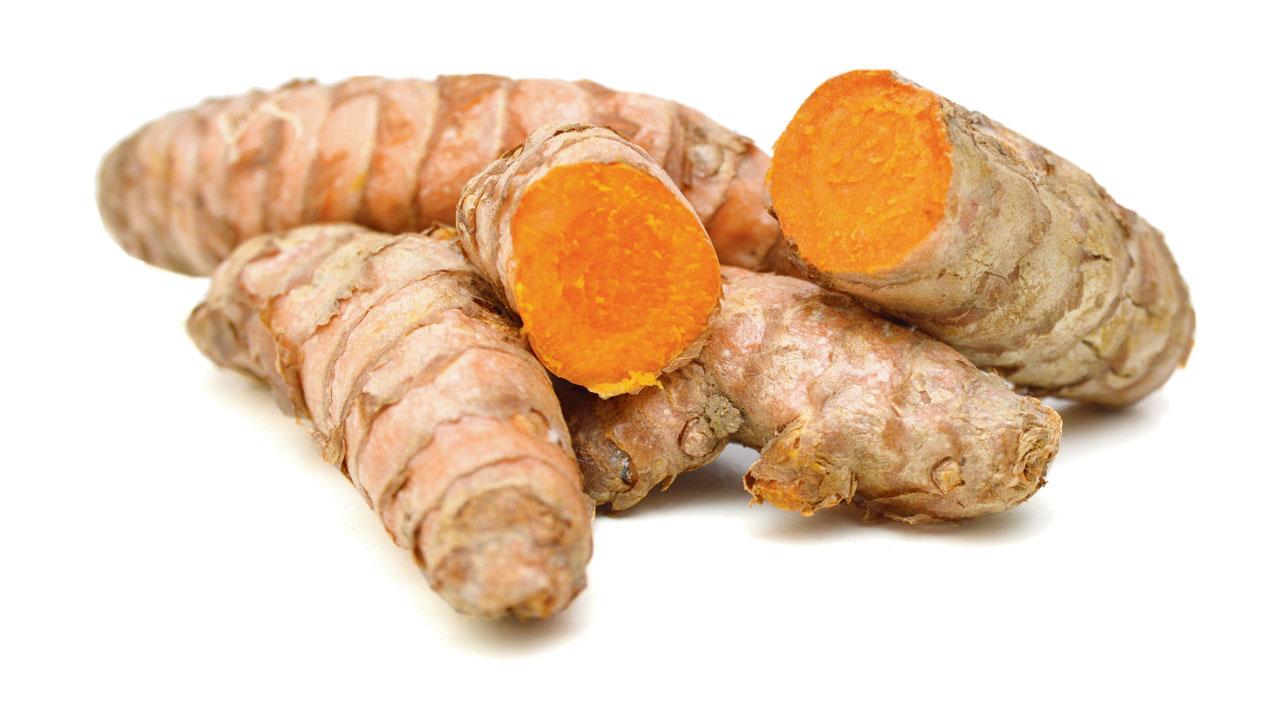What does India eat when it shivers? We got community chefs talking

Kachi Haldi Di Panjiri
Winter is not a season, it’s a celebration, a mood, as they say. And even if it is short-lived in the city, it’s best to make the most of it, including enjoying seasonal greens, and gajar ka halwa. Every winter, our stock of gajak arrives from Lucknow. This time, a relative sent over a big batch of panjiri, a north Indian speciality made from whole-wheat flour and heavily laced with dried fruits and edible gum. This got us digging deeper for its variants, and on a mission to know what India eats when things get cold.
ADVERTISEMENT

Reetu Uday Kugaji
At culinary expert and chef consultant Reetu Uday Kugaji’s home in Navi Mumbai, Panjiri is a must to make in winters. She makes it in bulk and calls it desi granola. “Why not?,” she retorts. “This authentic traditional Punjabi sweet is loaded with goodness of whole wheat flour, semolina, clarified butter, edible gum, fox nuts, nuts, mixed melon seeds, carom seeds (ajwain), dry ginger powder (sonth), green cardamom powder, fennel seed powder, fenugreek seed powder and is sweetened with the desi khand (raw cane sugar) or powdered jaggery.”
Evidently, panjiri is not only a comfort food but an excellent nutritional supplement in winters. It provides warmth to our body and boosts immunity to help fight colds and coughs. Only hitch is to limit its intake, as the ingredients have a garam taseer (hot by nature) and consumption in large quantities can cause difficulties. Panjiri can be consumed at any time with or without warm milk. It has a shelf life of three months at room temperature and six months when refrigerated.

Kugaji gives a twist to the traditional panjiri with ingredients to fight cold, like the kacchi haldi di panjiri (raw turmeric), almond and pine nut panjiri, sukhe mewe ki panjiri and phool makhana ki panjiri (fox nuts). Here’s her family heirloom recipe.
It’s kardant in K’taka
Growing up in Belgaum (Karnataka), where the winter temperatures drop down to 9 degrees, home chef Swapneel Prabhu’s mom used to make kardant for nourishment. “It is something like a crumbled dink laadu,” she says, but not quite. These days, it is sold in bars, and is essentially a mix of roughly chopped nuts, poppy seeds and dry fruits toasted individually in ghee. To this is added a spiced jaggery syrup, and toasted dried coconut. It cools into a lumpy, crumbly mixture. As kids, my maternal grandfather would take my mom and her siblings to this particular sweet mart called Nagori in Belgaum to buy them kardant. Served on individual papers for each child, the gang would then settle around the ‘bara gadgadyanchi vihir’ (the well with twelve wheels) and enjoy the treat. “My ajoba would then continue on to work,” she says, “while my mother and her siblings returned home with a packet of kardant, or whatever little was left of it after each of them took turns digging into the ‘securely packed’ parcel.”
Noren gur sparkles in Bengal
In Bengal, gur and til (sesame seeds) are eaten in combination as they both heat the system. “Winters in Bengal are fleeting and during the short season (barely nine to 10 weeks), temperatures rarely fall below 15 or 16 degree Celsius,” says home chef Iti Misra. “But even this short spell is welcomed and celebrated by preparing sweets made with date palm jaggery, which is star product of the cold weather. Narroohs or laddoos are made in homes by cooking the jaggery to hard-ball stage, folding in til and shaping the mass into laddoos. These harden when cool and can be stored for the entire season.
 Tiller Narrooh
Tiller Narrooh
Sometimes, the gur is combined with puffed rice (muri) or khoi to make other delicacies. These are called moahs not naroohs. Bengalis are nothing if not imaginative.” Misra is also fond of gajak, a dry sweet made of sesame seeds, cooked in raw sugar syrup and set in thin layers. The dough is hammered until the seeds break down and release their oils into the dough. It takes about 15 hours to make five to eight kg of gajak. This melt-in-the-mouth delicacy can be stored for months. Originating in a small district called Morena at the heart of Madhya Pradesh, its variants include til-revadi gajak, khas gajak and til-mawa gajak.
Punjabi panjiri
Ingredients
2 cups whole wheat flour
1/2 cup semolina, dry roasted
12 tbsp desi ghee
1/4th tsp carom seeds (ajwain), lightly roasted and coarsely ground
1/2 tsp dry ginger powder (sonth)
1/2 tsp green cardamom powder
1 tsp fennel seed powder
1/2 tsp fenugreek seed, powdered
75 gm edible gum (gondh), roasted in desi ghee and coarsely ground
1/2 tbsp lotus seeds (makhana) fried in desi ghee and coarsely ground
1/2 cup raw cane sugar (desi khand), powdered
1 tbsp almonds, fried and coarsely ground
16 cashew nuts, fried and coarsely ground
1 tbsp mix melon seeds, lightly roasted
15 gm charoli, fried
Method
In a heavy-bottomed non-stick pan, dry roast the whole wheat flour till you get a nutty aroma. Add desi ghee, and cook it on a slow flame till it is well combined. Add semolina, and stir with a spatula. When the mixture starts turning a beautiful light golden brown, cook for another five minutes till the aroma of raw flours disappears. Add powdered dry ginger, green cardamom, fennel, fenugreek, carom and lotus seeds, and edible gum.
Now add the coarsely ground nuts, whole fried almonds, cashew nuts, charoli and mixed melon seeds. Mix well. Take off the flame; let it cool. Add the desi khand and mix well till well combined. Cool the Panjiri completely. Store it in a sterilised and dry air-tight glass jar.
Chef’s Tip: Add lightly roasted desiccated coconut, coarsely ground dried dates (chuara), pistachios, white sesame seeds, flax seeds and raisins to pack more flavour and super powers.
 Subscribe today by clicking the link and stay updated with the latest news!" Click here!
Subscribe today by clicking the link and stay updated with the latest news!" Click here!







